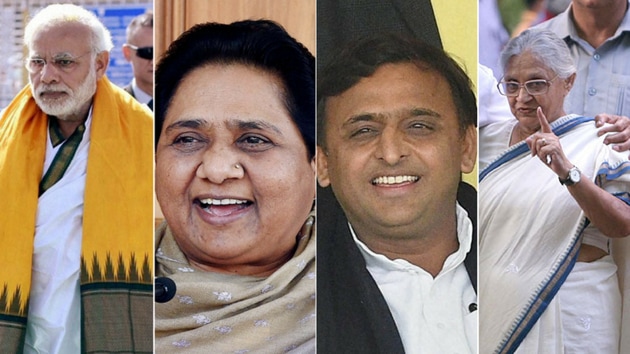Why UP matters: Can India’s most populous state decide the fate of Delhi?
When India’s most populous state votes, the rest of the country sits up and takes note. After all, many believe the road to Delhi goes through Uttar Pradesh.
When India’s most populous state votes, the rest of the country sits up and takes note. After all, many believe the road to Delhi goes through Uttar Pradesh.

No wonder then that when the BJP launched its Parivartan Rath Yatra from Saharanpur in early November, its president Amit Shah presented Prime Minister Narendra Modi as ‘UP-wale’ (one belonging to UP).
Though the Prime Minister is from Gujarat, Modi represents UP’s Varanasi in the Lok Sabha.
Nine of India’s 15 prime ministers have come from the state.
The UP elections this time have become more interesting in the backdrop of the high-voltage power struggle playing out within the first family of the state’s ruling Samajwadi Party.
The family drama has pitted the young incumbent chief minister, Akhilesh Yadav, against the patriarch Mulayam Singh Yadav. As the father-son battles it out for control of the party, there has been a surfeit of suspense, tension and melodrama normally associated with sitcoms.
Read | Assembly polls 2017 will be a mini referendum on Modi’s demonetisation
The Yadav family aside, the outcome in UP will be important for all non-BJP parties that aspire to uproot Modi from the Centre, providing them with a reality check on his current level of popularity. He is still riding a wave, or it is dissipating? A BJP defeat would enthuse opposition leaders and galvanise their workers.
On the contrary, a victory in UP will bolster Modi’s image, making him seem invincible. It will be seen as a thumbs-up to his bold demonetisation drive and provide a shot in the arm before the 2019 Lok Sabha polls.
The elections will also shape the complexion of the Rajya Sabha where the BJP is anxious to increase its strength. It will play a crucial role too in the presidential elections next year. If the BJP wins, it will comfortably see the candidate of its choice reach Rashtrapati Bhawan.
The BJP package
The party that rode to power on the Ram Janmabhoomi issue in the early 1990s witnessed its decline in the state after the demolition of the disputed Ayodhya shrine on December 2, 1992.
But the arrival of Modi from Gujarat to the state created an unprecedented frenzy of aspirations and it won 71 of the 80 seats in the last Lok Sabha polls. That frenzy has subsided but Modi remains a popular figure. His personality coupled with Amit Shah’s poll strategy can throw a massive challenge to both the ruling SP as well as the BSP. Shah has already weakened both – engineered defections in the BSP and fuelled differences in the Yadav family.
Read | Modi, Gandhi, Yadavs, Kejriwal: It’s make or break for them in 2017 elections
Nonetheless, UP is a tough nut to crack. Demonetisation is a gamble that could pay off or boomerang badly.
There’s another thaw: BJP may manage to set its caste arithmetic right but it does not have an attractive CM candidate.
The Parivar feud
Can the Samajwadi Party overcome the bickering within the party founder and inheritor? Initial signs showed confusion among its ranks, but as the drama drags on, there are signs of Akhilesh emerging stronger and as a leader on his own.
There are far too many imponderables as of now. Will the father-son duo reconcile, or will the party split? If they split, who gets the party symbol, or will it be frozen? Will a sulking Mulayam cost Akhilesh votes? Or whether Akhilesh’s clean pro-development image a recipe for electoral success?
Talk of Akhilesh aligning with the Congress is still a subject of speculation.
Behenji’s big battle
If one person has the highest political stakes in the 2017 elections, it is BSP national president Mayawati.
Several top leaders have deserted her in the recent months. But some political commentators say it won’t hurt the BSP much as it is a cadre-run party. But many at the same time believe that Mayawati will have a tough time stopping the exodus if she loses in 2017.
Read | Assembly polls 2017: Elections begin on February 4, counting on March 11
Her confidence, however, comes from the fact that though she lost the 2012 assembly and 2014 general elections, her vote percentage and popular vote remained impressive – 25.91% in 2012 as against 29.31% of the winning Samajwadi Party and 19.77% in 2014 when the Modi wave had literally swept the state.
The Congress is the fourth player, and UP is central to its revival, but it seems unlikely it will be able to change the game this time.
As the fate of 200 million people of Uttar Pradesh hangs in the balance, the stakes are indeed high for the political players.





